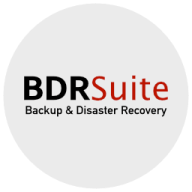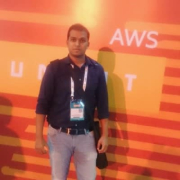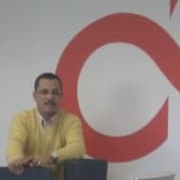

BDRSuite Backup & Replication and AWS Elastic Disaster Recovery are two prominent solutions in the disaster recovery field. User reviews indicate that BDRSuite is favored for customer support and ease of use, while AWS Elastic Disaster Recovery stands out with its robust feature set and reliability.
Features: Users recognize BDRSuite Backup & Replication for its comprehensive backup options, straightforward management, and ease in handling different backup configurations. AWS Elastic Disaster Recovery is valued for its seamless integration with other AWS services, automatic failover, and providing a highly reliable and scalable solution.
Room for Improvement: BDRSuite could benefit from enhanced scalability options, more intuitive reporting features, and improved automation capabilities. AWS Elastic Disaster Recovery users point out the steep learning curve, desire better cost efficiency, and seek more streamlined setup processes.
Ease of Deployment and Customer Service: BDRSuite Backup & Replication is noted for its simple deployment process and excellent customer service, which helps users navigate issues efficiently. AWS Elastic Disaster Recovery, although powerful, is more complex to deploy. However, AWS users find the service very reliable once set up.
Pricing and ROI: BDRSuite Backup & Replication is noted for its cost-effective solutions and quick ROI due to lower setup costs. AWS Elastic Disaster Recovery, although more expensive, offers significant long-term value due to its feature richness and scalability. Users indicate that while AWS is pricier, its extensive capabilities justify the investment.


CloudEndure Disaster Recovery enables real-time replication and rapid recovery to enhance organizational resilience. Key features include block-level data replication, ease of use, cost-effectiveness, and automated recovery orchestration. Users benefit from increased efficiency, improved workflows, and enhanced data management, significantly improving organizational performance and business continuity.
BDRSuite by Vembu offers comprehensive and cost-effective Backup and Disaster Recovery software tailored to meet the diverse data protection requirements of Businesses and Service Providers. BDRSuite provides robust backup solutions for a wide range of IT workloads, including virtual machines, servers, endpoints, SaaS applications, cloud VMs, NAS/File Shares, and databases & applications. It offers the flexibility to store backups anywhere and centrally manage the entire backup infrastructure.
BDRSuite is designed to help businesses keep their data secure and ensure it is easily recoverable in the event of data loss or ransomware attacks. With BDRSuite, businesses can achieve reliable data protection and ensure business continuity – all at an affordable price.
Download BDRSuite's 30-day Free Trial Here.
PRICING DETAILS
VMs, Servers & Cloud Backup at $48 per workload/year (VMware, Hyper-V, KVM, oVirt, Proxmox, Windows, Linux, AWS, Azure, File Share-500 GB)
Endpoint/Workstation Backup at $12 per endpoint/year (Windows, Linux, Mac)
SaaS Backup at $12 per user/year (Microsoft 365, Google Workspace)
DBs & Applications Backup at $72 per application/year (SQL Server, PostgreSQL, MySQL, Microsoft Exchange Server, SharePoint Server)
We monitor all Backup and Recovery reviews to prevent fraudulent reviews and keep review quality high. We do not post reviews by company employees or direct competitors. We validate each review for authenticity via cross-reference with LinkedIn, and personal follow-up with the reviewer when necessary.